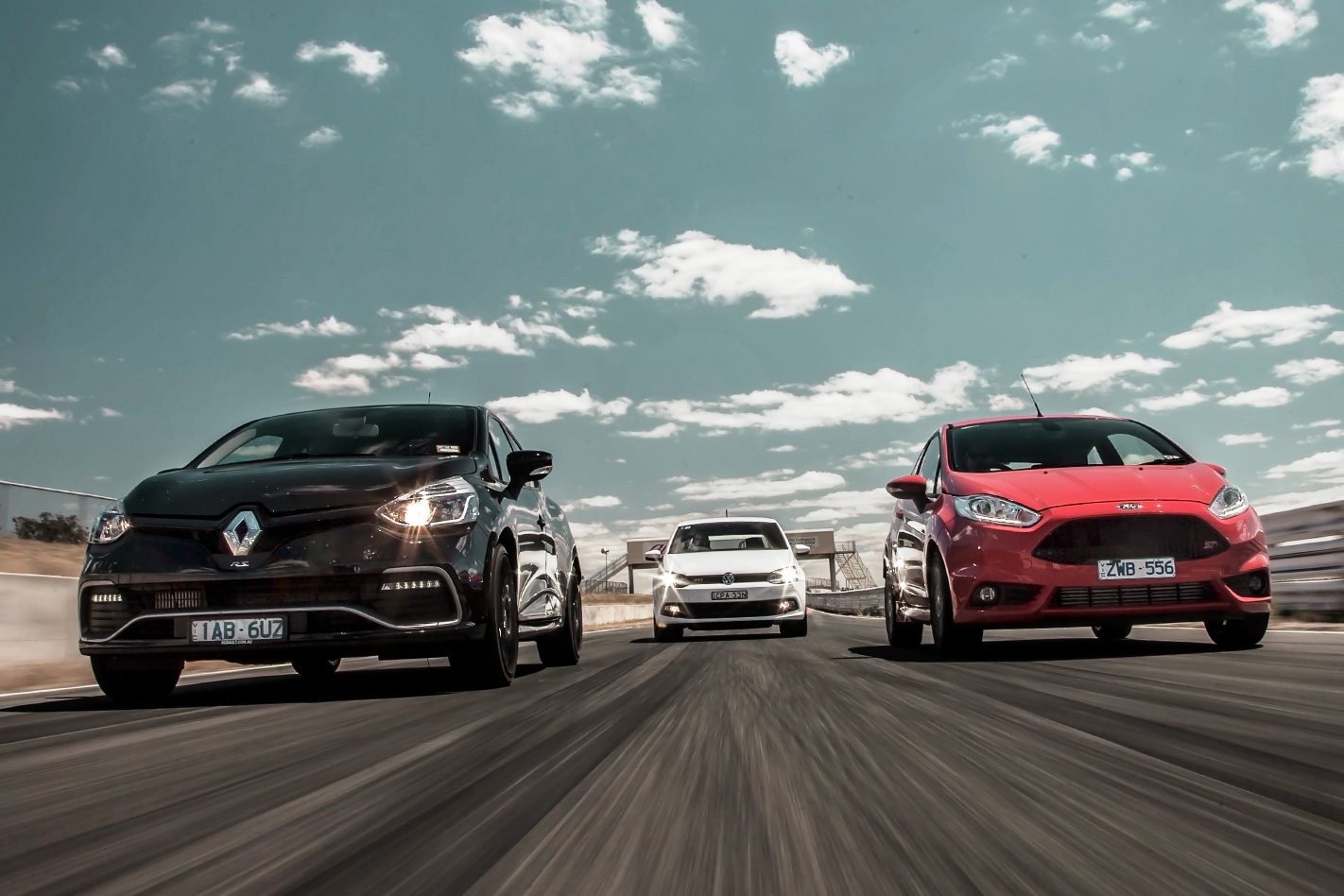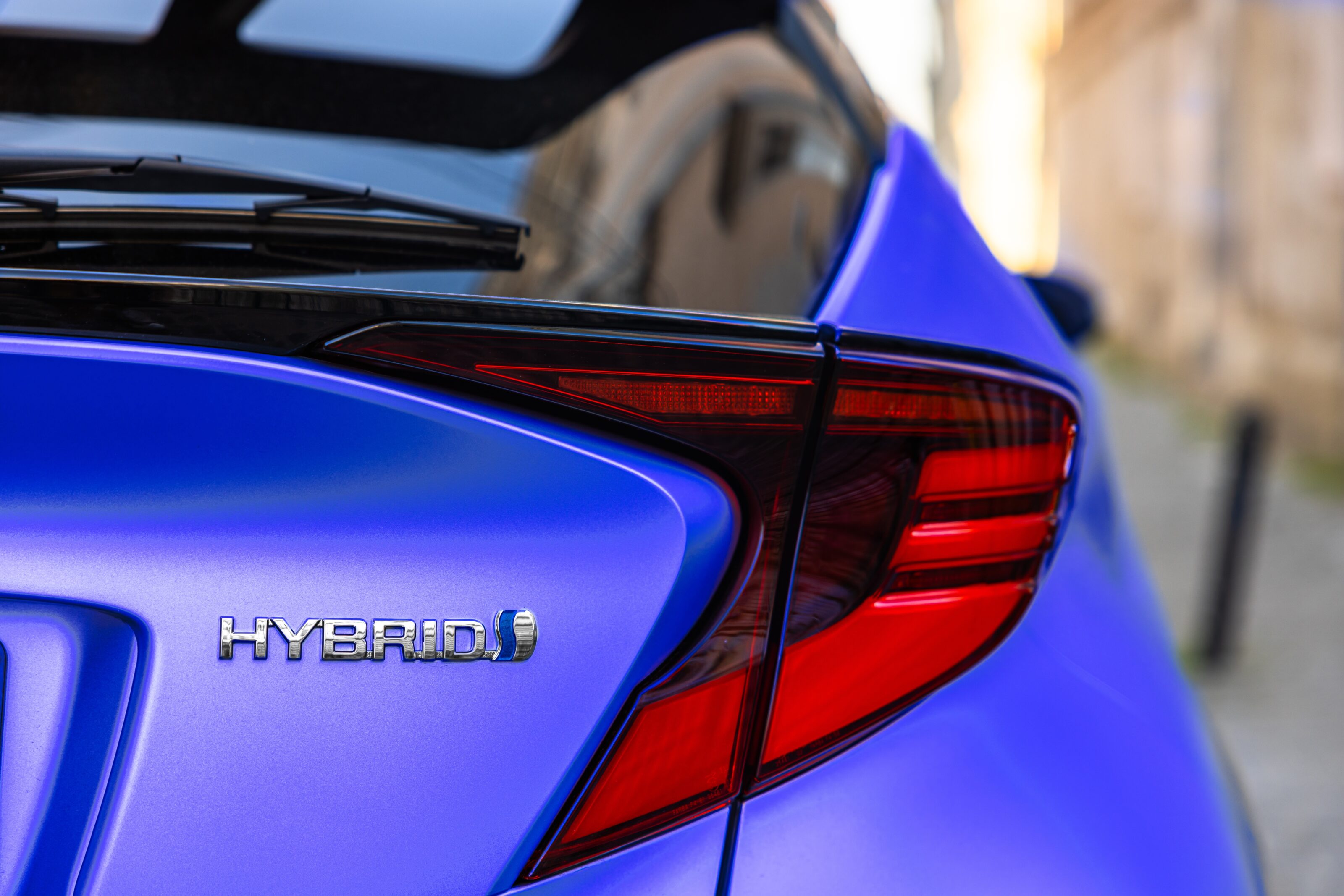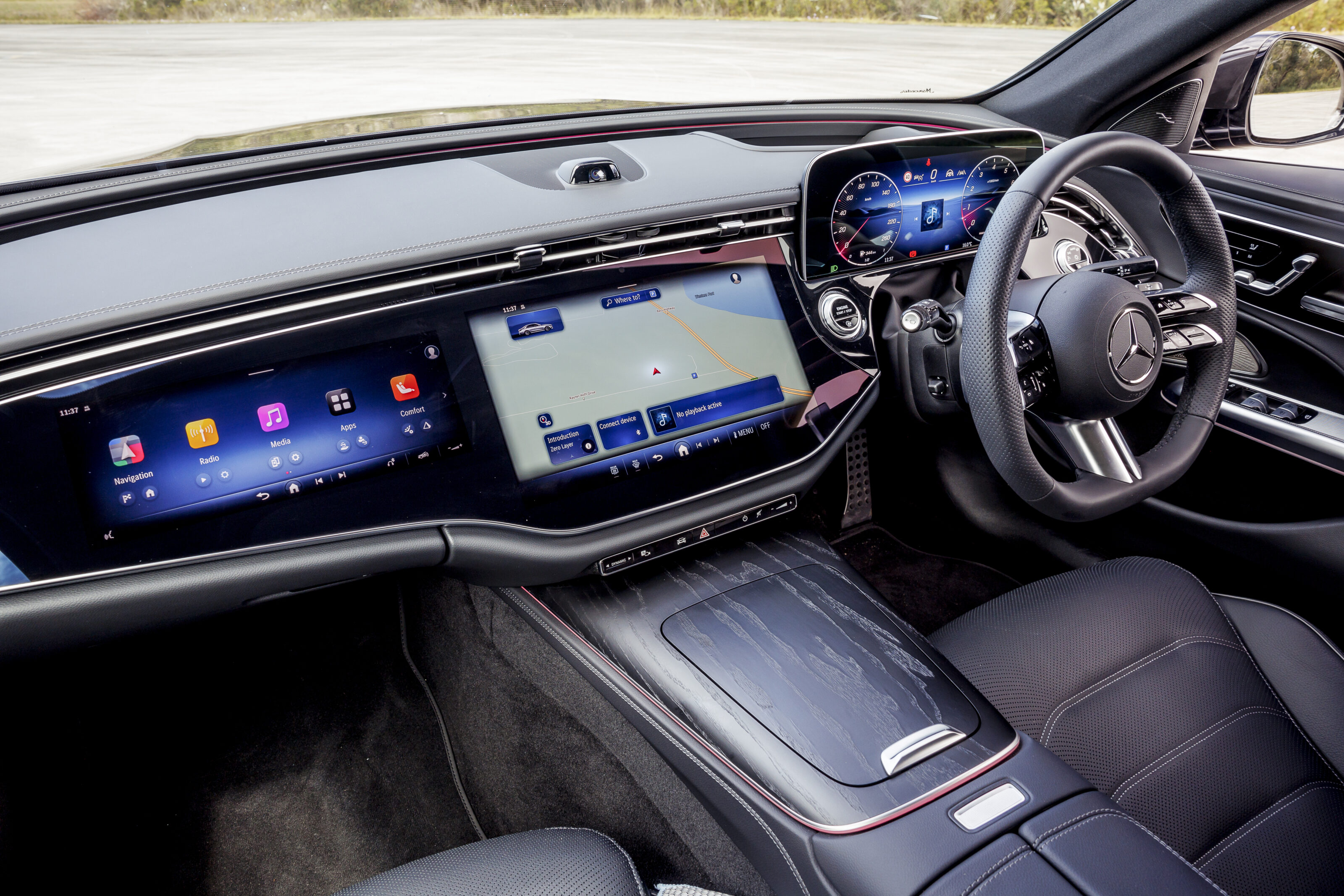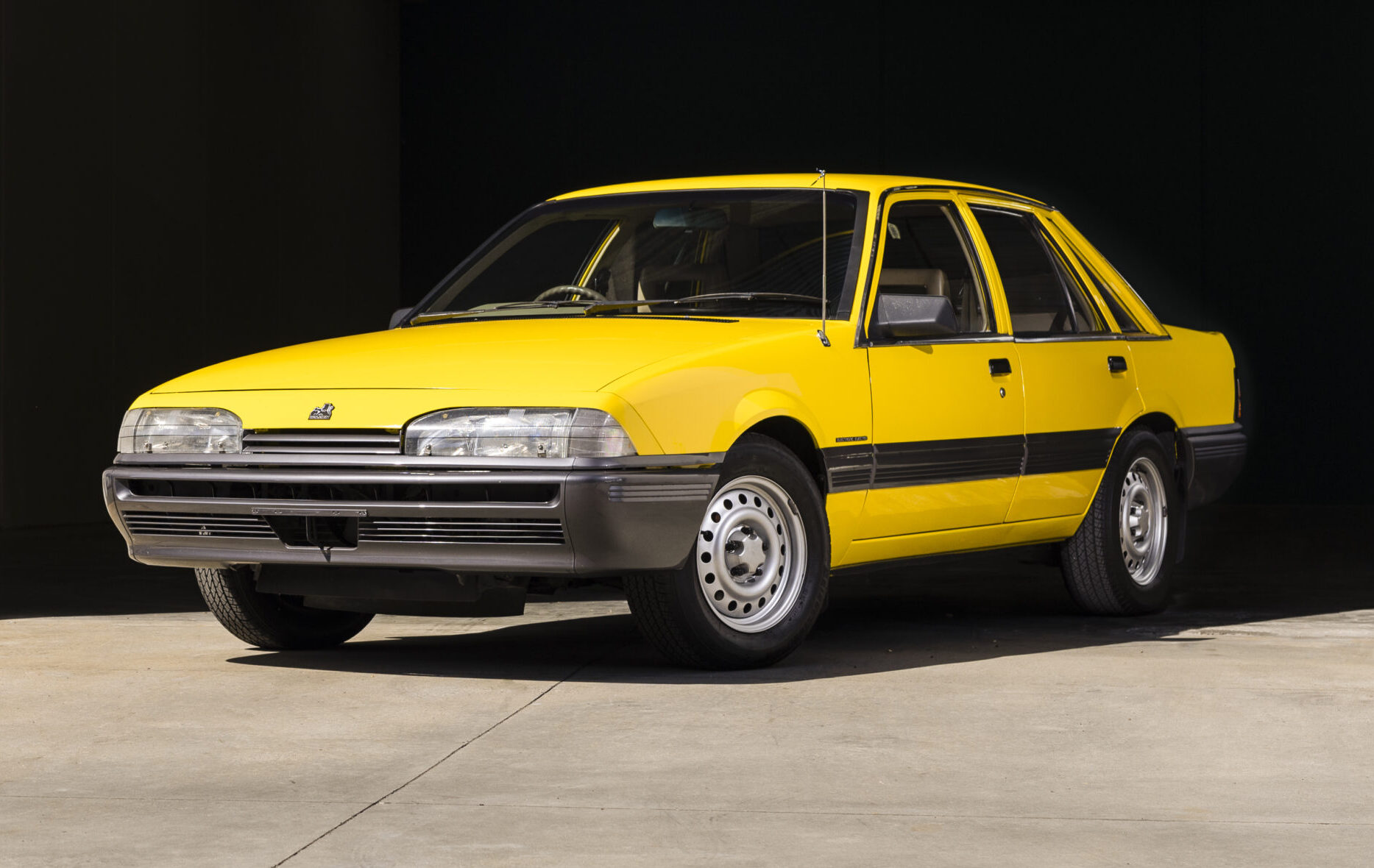There’s always significant risk associated with changing a successful formula.
Not only is there the challenge of tackling something new, there’s always the possibility the new stuff won’t be as good as the old stuff. Imagine, for example, if AC/DC decided to give away their rock god status and become a jazz quintet; no matter how good they were, there’d always be some bloke at the back of every gig yelling “play Thunderstruck!”
What does this have to do with the Renault Sport Clio? Well, ever since the 172 landed in 2001 it’s been the hot hatch benchmark for hardcore drivers, the weirdo driving position and slightly ropey build quality easily excused by the screaming atmo engine and a chassis that danced to every input.
However, brilliant though it was to drive, the hardcore Clio RS did present Renault with a slight problem: no one bought it. So to try and remedy this the new-gen Clio RS200 has ditched its indie roots and gone mainstream. In a sign of the times, the fizzy, slightly manic three-door of old has been replaced by a turbocharged, dual-clutch-only five-door.
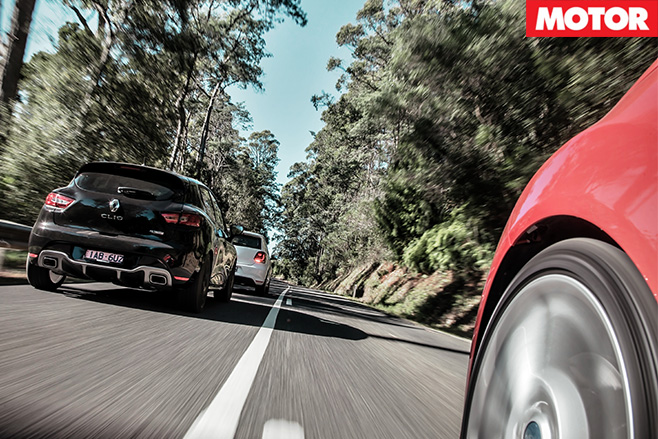
That said, if it’s value you’re after, then the Fiesta ST is your car. In fact, if it’s driving thrills you’re after, then Ford’s latest pocket rocket is likely to be right up your alley, too. Just how a car this good can be so ridiculously cheap is beyond us, but let’s not question it.
However, amidst the recent explosion of product at this end of the market, it’s easy to forget there’s been a sub-$30K hot hatch on sale for a couple of years now. A damn good one, too, the Polo GTI winning back-to-back BFYB crowns in 2011 and 2012. It’s been a while since we’ve driven it, but it only takes a few hundred metres to remember why it made such a good initial impression.
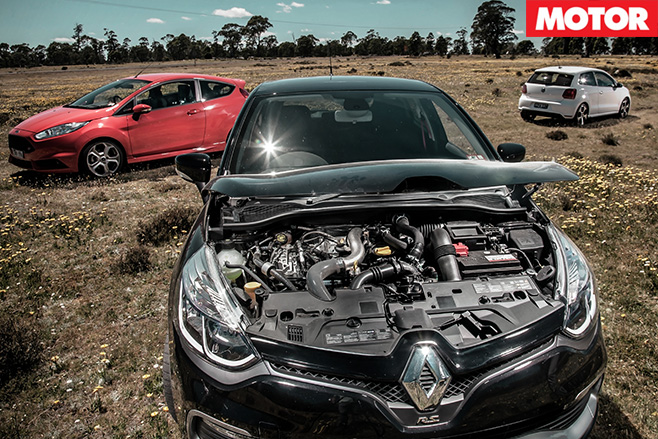
Head for the hills and the baby Vee Dub continues to impress. Like its bigger brother Golf, it has a knack for flowing down a road with minimum fuss but plenty of speed. Its softer setup allows more pitch and roll than the other two but keep your inputs smooth and it’ll settle into subtle four-wheel drifts.
It’s only when you ask for a little bit extra that the Polo starts to come apart. Carry too much speed into a corner and it falls into heavy understeer, any attempt to provoke the tail mid-corner is met with a firm “Nein!” from the un-killable ESP, and the inside front wheel scrabbles for purchase at corner exit.
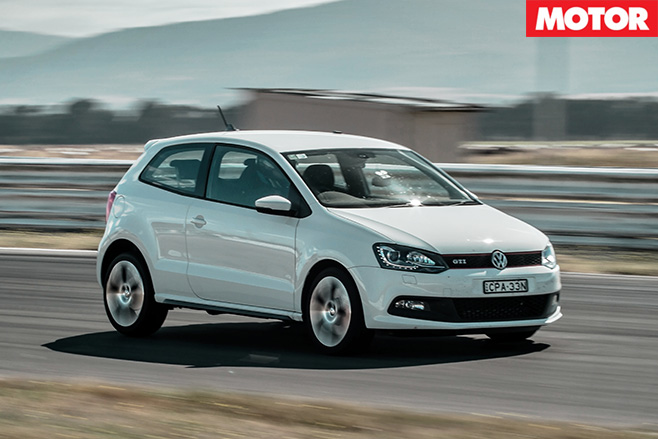
But whereas the VW feels a bit ragged at its limits, the Renault gets better the harder you belt it. Flicking the gear lever across to manual and pressing the silver ‘RS’ button in the centre console twice engages Race mode, which disengages the ESP and auto-upshift function and speeds up gearshifts.
Unshackled from its electronic constraints, the new Clio feels built for the track. It’s playful and adjustable, but stable enough to inspire confidence while negotiating Symmons’ sweeping back straight. The six-speed dual-clutch ’box promptly obeys commands (though we’d prefer a manual) and huge 320mm front rotors almost stand the Clio on its nose under brakes.

Robbed of the wide expanses of the racetrack, driving the Clio hard enough for it to come alive on the road takes real commitment. Driving the old RS hard could be a bit like juggling on ice – hands and feet a blur of movement as gears were grabbed and steering corrections applied – but the new car can feel a bit flat unless you’re right up it. Unfair to compare new with old? Perhaps, but a stint in the Fiesta highlights what the Clio is missing.
The Ford is so playful you’d swear it’s being fuelled with Ritalin. It’s so responsive to changing its attitude via the steering, brakes or throttle, yet constantly sends reassuring messages through your hands and backside. Such is its ability, after a while you won’t care about the restless low-speed ride. Maybe.

The ultra-smooth hotmix of Symmons Plains does expose a chink or two in the Ford’s armour, though. Its brakes feel spongy after the Clio’s and there’s some steering rack rattle when the chassis is heavily loaded up. Still, a 1:08.8sec lap is the best of the bunch, though that 0.7sec advantage is likely to be a product of its sticky Bridgestone RE050A tyres and punchy EcoBoost engine.
The Fiesta’s trump card is its 20-second overboost function, which lifts outputs from 134kW/240Nm to a much healthier 147kW/290Nm. It may be slowest to 100km/h and last across the quarter mile, but being the only manual here it’s the trickiest to launch with the slowest shifts. It’s fastest to 160km/h and only increases its lead from then on. Sounds good, too, its old-school growl enhanced by plenty of new-school turbo chatter.
When it comes to punching above your division, though, the Polo GTI is king. A clean launch nets 0-100km/h in just 6.67sec, more than two-tenths faster than its claim, and a 14.8sec quarter mile, fastest of the trio.

Unlike the Renault, which doesn’t sound like much of anything. There are some nice pops on the overrun, but switching to Sport or Race simply makes the exhaust noise – and it is just a noise – louder, without adding anything to the experience. Launch control allows the Clio to nail its 6.7sec 0-100km/h and 14.9sec quarter mile claims with minimal effort, the driver having to do nothing but press the right pedal and hang on.
So this trio might be neck-and-neck on the drag strip, but they differ wildly when it comes to the catwalk. The Renault is the freshest of the three, though areas of its modern design, like its prominent ‘beak’ and banana-shaped sills, are likely to be an acquired taste. The Polo’s unadorned bodyshell looks pretty sharp in virginal white with those telephone dial alloys, though unkind souls might call it bland.
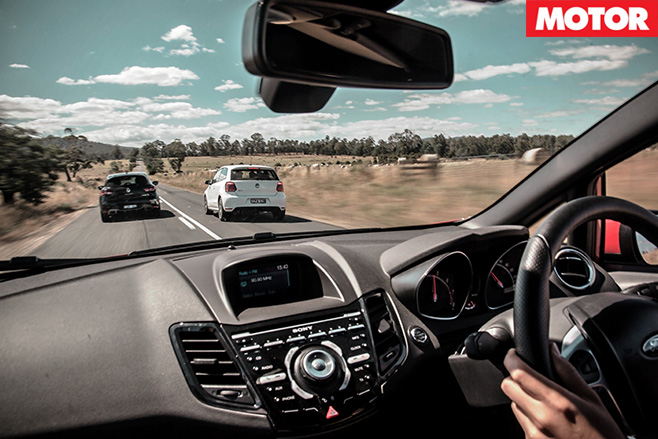
Unlike its interior, which has dated already. The driving environment is superb, but its tiny display screen and scattered dash layout betray its 2009 origins. And those super snug Recaros, really great when you’re having a fang, can be a pain over long distances.
Inside, the Renault gains an advantage by being the newest model here. It’s roomy front and rear, the front seats are great and the driving position is as right as previous Clios were wrong. There are still some weird Frenchisms, like the multimedia controls hidden behind the steering wheel and cruise control/speed limiter switch hidden under the handbrake, but overall it’s a classy effort.
As is the Polo. Much like the way it drives, everything is intuitive and exactly where you’d expect it to be. There’s yet another set of great front seats and the leather-wrapped wheel is beautiful to hold. Yes it’s $2000 more than the Fiesta, but it feels worth every cent from inside. The boot’s very small, but boot space isn’t going to decide the winner of this comparison, that’ll be determined by the way they drive.
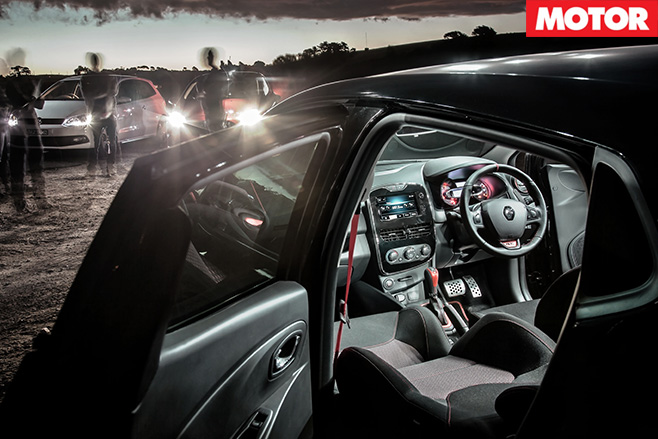
Arguably, the Clio is now too composed. Renault nailed its brief of making the RS200 more habitable day-to-day while retaining its dynamic ability, but whereas its predecessor made every journey memorable (if not always for the right reasons) often the new RS feels like ‘just another car’.
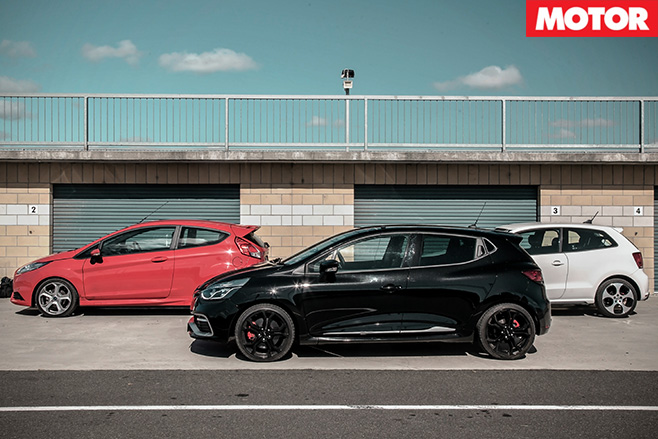
Yes, the low-speed ride is pretty crappy and the interior is a long way from benchmark, but even if the Fiesta ST rode like a skateboard and had a dash made out of wheelie bins we’d still love it, because it’s more fun to drive than paintballing at the Playboy mansion. And it’s $25,990! Cheap and cheerful. That’s one formula that never needs to change.
| u00a0 | u00a0 | u00a0 | Ford Fiesta ST | u00a0 | u00a0 | Volkswagen Polo GTI | u00a0 | u00a0 | Renault Sport Cliou00a0 |
| Body | u00a0 | u00a0 | 3-door, 5-seat hatch | u00a0 | u00a0 | 3-door, 5-seat hatch | u00a0 | u00a0 | 5-door, 5-seat hatch |
| Drive | u00a0 | u00a0 | front-wheel drive | u00a0 | u00a0 | front-wheel drive | u00a0 | u00a0 | front-wheel drive |
| Engine | u00a0 | u00a0 | 1596cc inline-4, DOHC, 16v, turbocharger | u00a0 | u00a0 | 1390cc inline-4, DOHC, 16v, turbocharger and supercharger | u00a0 | u00a0 | 1618cc inline-4, DOHC, 16v, turbocharger |
| Bore/Stroke | u00a0 | u00a0 | 79.0 x 81.4mm | u00a0 | u00a0 | 76.5 x 75.6mm | u00a0 | u00a0 | 79.7 x 81.1mm |
| Compression | u00a0 | u00a0 | 10.1:1 | u00a0 | u00a0 | 10.0:1 | u00a0 | u00a0 | 9.5:1 |
Power | u00a0 | u00a0 | 134kW @ 5700rpm (147kW overboost) | u00a0 | u00a0 | 132kW @ 6200rpm | u00a0 | u00a0 | 147kW @ 6000rpm |
| Torque | u00a0 | u00a0 | 240Nm @ 1600-5000rpm | u00a0 | u00a0 | 250Nm @ 2000-4500rpm | u00a0 | u00a0 | 240Nm @ 1750rpm |
| Power/weight | u00a0 | u00a0 | 112kW/tonne | u00a0 | u00a0 | 111kW/tonne | u00a0 | u00a0 | 121kW/tonne |
| Consumption | u00a0 | u00a0 | 10.3L/100km (tested) | u00a0 | u00a0 | 11.9L/100km (tested) | u00a0 | u00a0 | 11.0L/100km (tested) |
| Emissions | u00a0 | u00a0 | 246g/km CO2 (tested)u00a0 | u00a0 | u00a0 | 284g/km CO2 (tested)u00a0 | u00a0 | u00a0 | 261g/km CO2 (tested) |
| Transmission | u00a0 | u00a0 | 6-speed manual | u00a0 | u00a0 | 7-speed dual-clutch | u00a0 | u00a0 | 6-speed dual-clutch |
| Weight | u00a0 | u00a0 | 1197kg | u00a0 | u00a0 | 1189kg | u00a0 | u00a0 | 1218kg |
| Suspension | u00a0 | u00a0 | struts, L-arms, anti-roll bar (f); torsion beam, coil springs, anti-roll bar (r) | u00a0 | u00a0 | struts, A-arms, anti-roll bar (f); torsion beam, coil springs, anti-roll bar (r) | u00a0 | u00a0 | struts, A-arms, anti-roll bar (f); torsion beam, coil springs, anti-roll bar (r) |
| L/W/H | u00a0 | u00a0 | 3975/1709/1495mm | u00a0 | u00a0 | 4064/1682/1500mm | u00a0 | u00a0 | 4090/1732/1448mm |
| Wheelbase | u00a0 | u00a0 | 2489mm | u00a0 | u00a0 | 2456mm | u00a0 | u00a0 | 2589mm |
| Tracks | u00a0 | u00a0 | 1492/1481mm (f/r) | u00a0 | u00a0 | 1443/1434mm (f/r) | u00a0 | u00a0 | 1504/1500mm (f/r) |
| Steering | u00a0 | u00a0 | electrically-assisted rack and pinion | u00a0 | u00a0 | electrically-assisted rack and pinion | u00a0 | u00a0 | electrically-assisted rack and pinion |
| Brakes | u00a0 | u00a0 | 278mm ventilated discs, 2-piston calipers (f); 253mm solid discs, single-piston calipers (r) | u00a0 | u00a0 | 288mm ventilated discs, 2-piston caliipers (f); 232mm ventilated discs, single-piston calipers (r) | u00a0 | u00a0 | 320mm ventilated discs, 2-piston calipers (f); 260mm solid discs, single-piston calipers (r) |
| Wheels | u00a0 | u00a0 | 17 x 7.0-inch (f/r) | u00a0 | u00a0 | 17 x 7.0-inch (f/r) | u00a0 | u00a0 | 18 x 7.0-inch (f/r) |
| Tyres | u00a0 | u00a0 | 205/40 R17 84Y | u00a0 | u00a0 | 215/40 R17 87V | u00a0 | u00a0 | 205/40 R18 86Y |
| Price | u00a0 | u00a0 | $25,990 | u00a0 | u00a0 | $27,990 | u00a0 | u00a0 | $31,290 |
| Price as tested | u00a0 | u00a0 | $25,990 | u00a0 | u00a0 | $27,990 | u00a0 | u00a0 | $31,840* |
| Positives | u00a0 | u00a0 | Massively entertaining; cracking engine; cheap as chips | u00a0 | u00a0 | Straight-line performance; ride quality; interior feel | u00a0 | u00a0 | Brilliant on track; incredible brakes; huge grip |
| Negatives | u00a0 | u00a0 | Interior a little off the pace; ride quite firm; seats can be a squeeze | u00a0 | u00a0 | Ragged at the limit; non-switchable ESP | u00a0 | u00a0 | Not as involving as it once was; no manual option; engine note |
| u00a0 | u00a0 | u00a0 | 4.5/5 | u00a0 | u00a0 | 4/5 | u00a0 | u00a0 | 4/5 |
im


